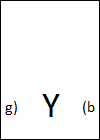Norsaga Game Design, Part 3
Kevin Bishop
 This is the third in a series of articles tracing the design of Norsaga’s core gameplay loop and mechanical balance. To see where it ends up, check out the rules document on the main site.
This is the third in a series of articles tracing the design of Norsaga’s core gameplay loop and mechanical balance. To see where it ends up, check out the rules document on the main site.
Last time, we talked about the evolution of Norsaga’s core concept. Today, we’ll explore the gameplay and design iterations that forged the embellishments into their final version.
Might embellishments (red)
Adapt (1st gen)
Initial version:
Change your story.
"Changing your story" was originally the gameplay term for playing a new card on top of an old card. The only change this power ever went through was a more generic wording once the gameplay terminology was dropped.
Final version:
Dismiss one of your heroes and place a new card in that spot.
Assault (2nd gen)
Initial version:
Discard 2 cards. If you do, one player must dismiss a hero from their family tree.
Again, nearly final. This power did iterate through a variation or two. The first change made it both more powerful and more difficult to cast by adding a color requirement on the discarded cards:
You may discard 2 hero cards with red dominant and/or recessive traits to dismiss 1 hero from any family tree.
This change was quickly reverted (too difficult to pull off). The power remained in its initial version all the way through Gen Con 2014, where an argument about its power (or lack thereof) lead to the following final version:
Dismiss 2 cards. Choose a player. They must dismiss a hero from their family tree.
Can you spot the important difference? Now you get the effect whether or not you actually had 2 cards in hand to discard. This lets red get more mileage out of skalds to keep pace with the other colors in the midgame.
Invade (3rd gen)
Initial version:
Play an ancient hero on another player's family tree.
Originally, all 3rd gen powers only hit the "back row" (aka grandparents).
Although this is basically the final version, it took some time to realize it. In the second playtest, this power was moved to yellow gen 3, and red's gen 3 became this:
Pick 1 ancient hero on your family tree and one on another player's family tree. Dismiss both of them.
It provided targeted kill but at a high price. Too high, it turns out. The power was reverted back.
Over time we realized just how restrictive the "3rd gen hits 3rd row" rule was becoming, so it was dropped. This lead to the final version of the power:
Play a card on another player's family tree.
Lore embellishments (blue)
Augur (1st gen)
Initial version:
You may draw 1 card.
This was the first embellishment ever created. Simple and obvious, right?
It actually took a few playtests to realize that blue's power was just drawing one of his next turn's cards a turn early. In Norsaga, discarding cards is actually as powerful as drawing them (and often more so). The more you discard, the more chances you have next turn to draw the perfect card.
This lead to an implicit rule that no power leaves you with more cards in hand than you started with. Thus, Augur evolved into its final form:
Draw a card, then discard a card.
Offering (2nd gen)
Ah, Offering. The most difficult power in the game to finalize. Initial version:
You may look at the top card of the deck and either play it or discard it.
If you said "That's yellow gen 2!" you'd be correct. The power started out as blue with a "conjuring from thin air" vibe. A few revisions later, this moved to yellow and became the skald's best friend, Prayer.
Meanwhile, blue got this in its stead:
Discard a blue hero card. If you do, play a card.
Although this is nearly the final power, it remained as-is for months while we agonized over it. We liked the concept, but it was failing in gameplay. If you've reached blue gen 2, you want to play your blue cards, not throw them away to get other cards out that won't help with embellishing. But without the color restriction, it boiled down to "play your best card, discard your worst card" which was overpowered as heck.
It was many months before we came across a simple fix that made the power much more reasonable: by letting you discard anything but forcing the card you play to match the color of the discard, we greatly opened up the gameplay space while keeping a reign on the power.
Final version:
Discard a card. If you do, you may play a card of the same color as the discarded card.
This new variation rewarded you for drawing "pairs" of the same color. Some math showed us that the odds of drawing pairs were sufficiently favorable despite only having four cards in hand. In addition, a blue player with no pairs has 4 different color cards in hand, making it easy to Augur for a match that you can use next turn.
If this sounds like a lot of thought and agony over what ended up being a subtle change: it was. But it made the difference between an underpowered "feel bad" power, an overpowered nuclear option, and a strategic tool that players can use to demonstrate skill for greater reward.
Possess (3rd gen)
Initial version:
Choose one of your ancient couples. Until the end of your next turn, count both of their dominant traits.
Probably not what you were expecting! This power remains one of the most interesting and "different" ideas we ever came up with. Unfortunately, it's not fun in practice. Because you can activate it on a different couple each turn, it plays as though you have all dominant traits in your third row at all times; other players just have to race to win before you turn on the ones you need.
This gave way to what is actually the final power, plundered (pun intended) from its original place as green's gen 3:
Pick an ancient hero from another player's family tree and swap it with one from yours.
The final version simply removes the "ancient" restriction:
Pick a hero from another player's family tree and swap it with one from yours.
Check back next time as we cover the evolution of the green and yellow embellishments.





